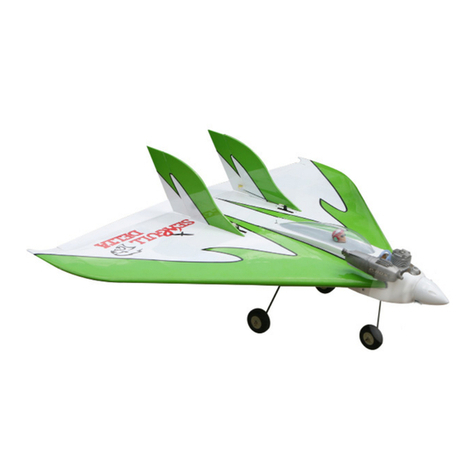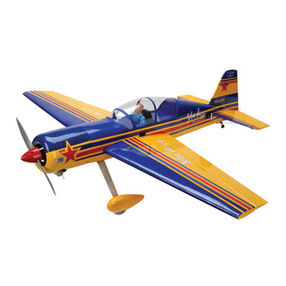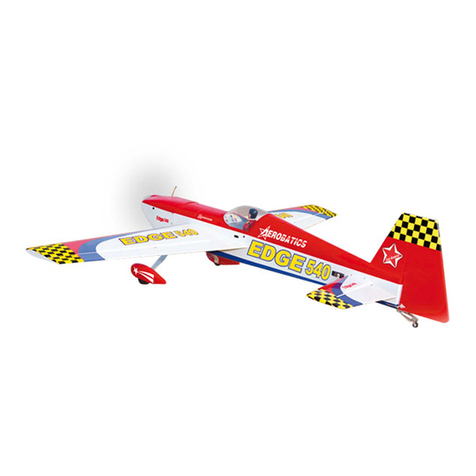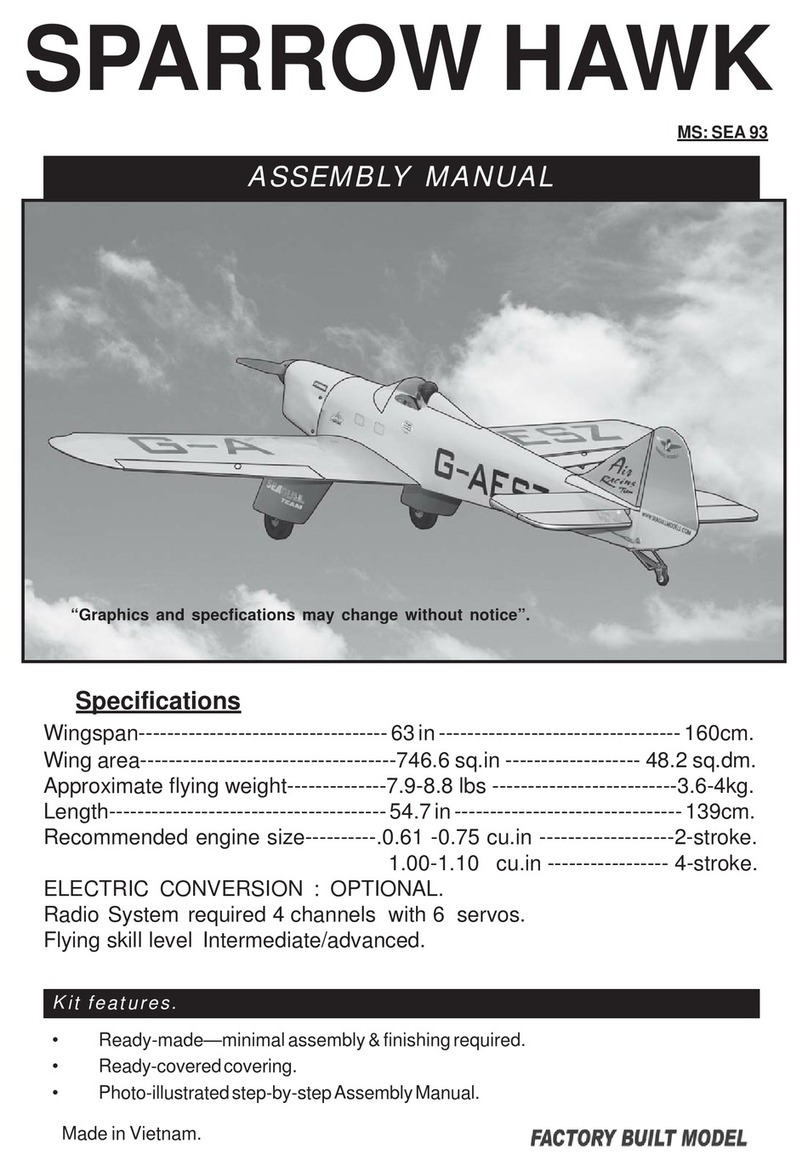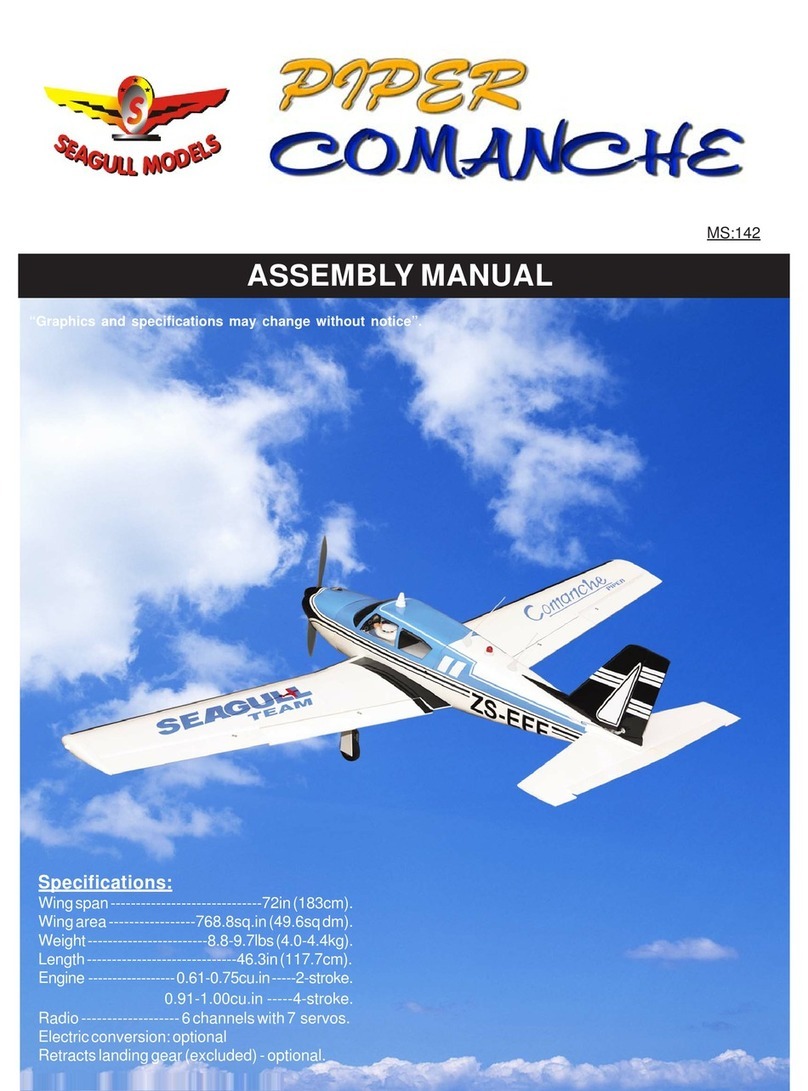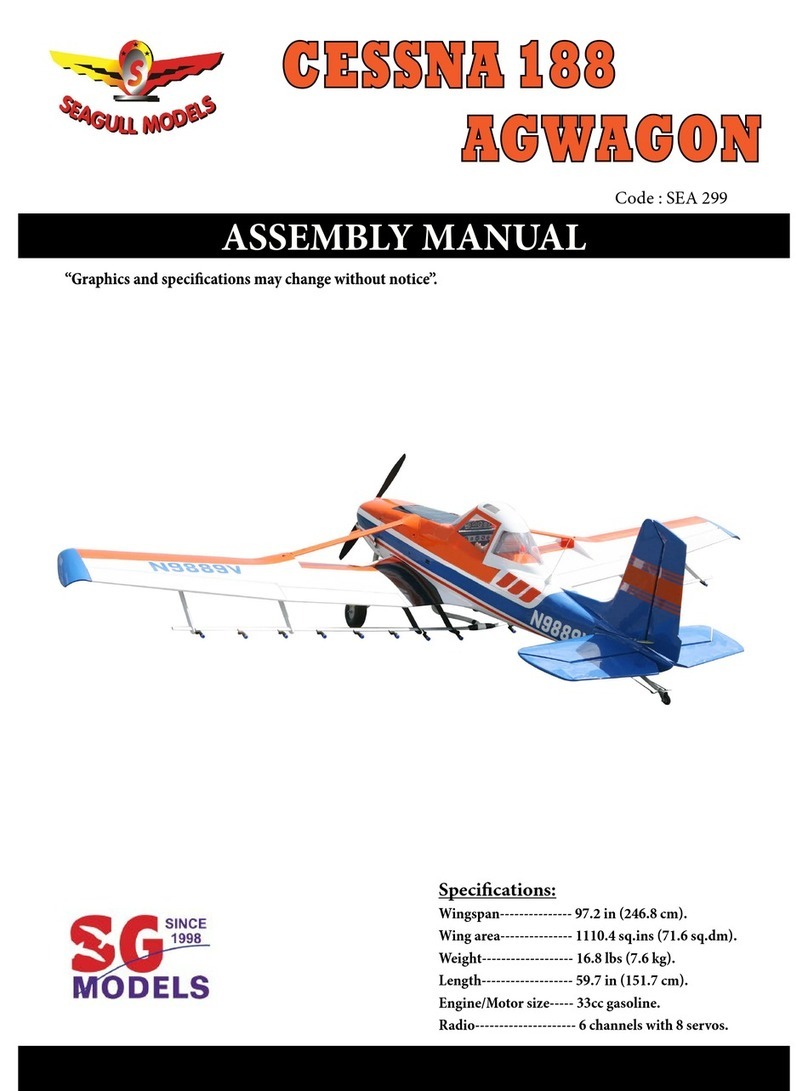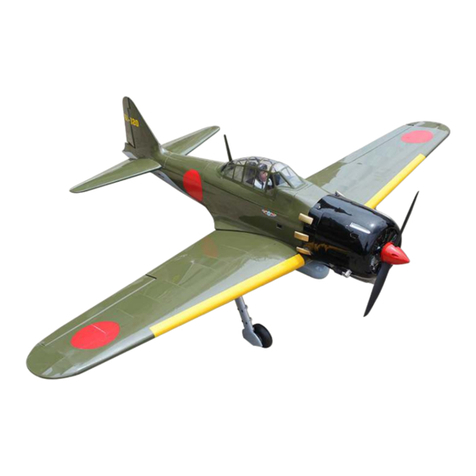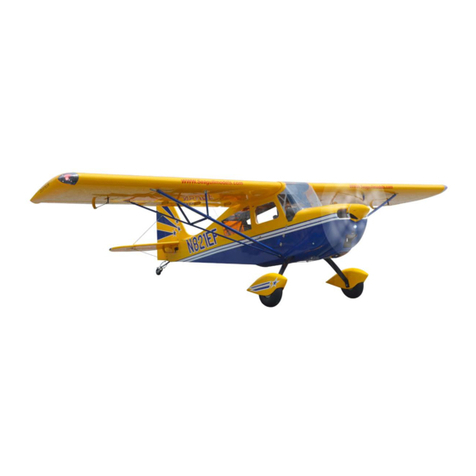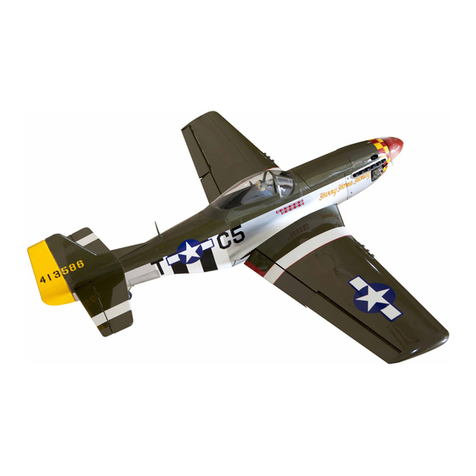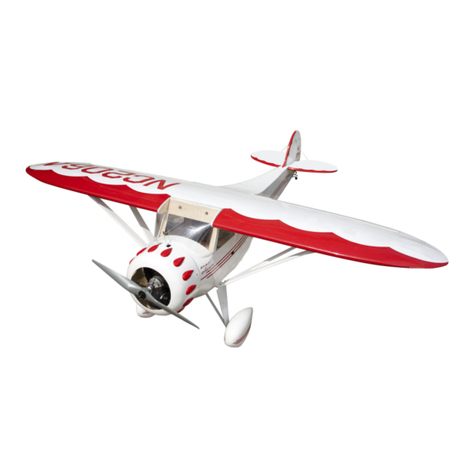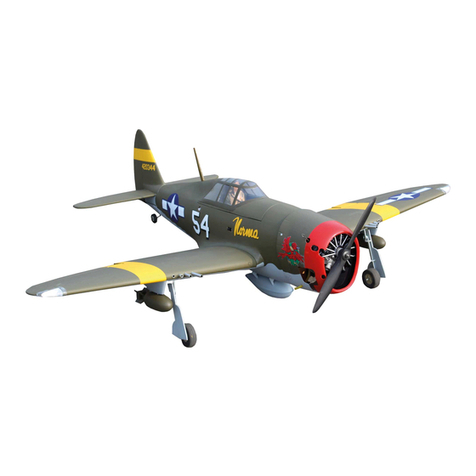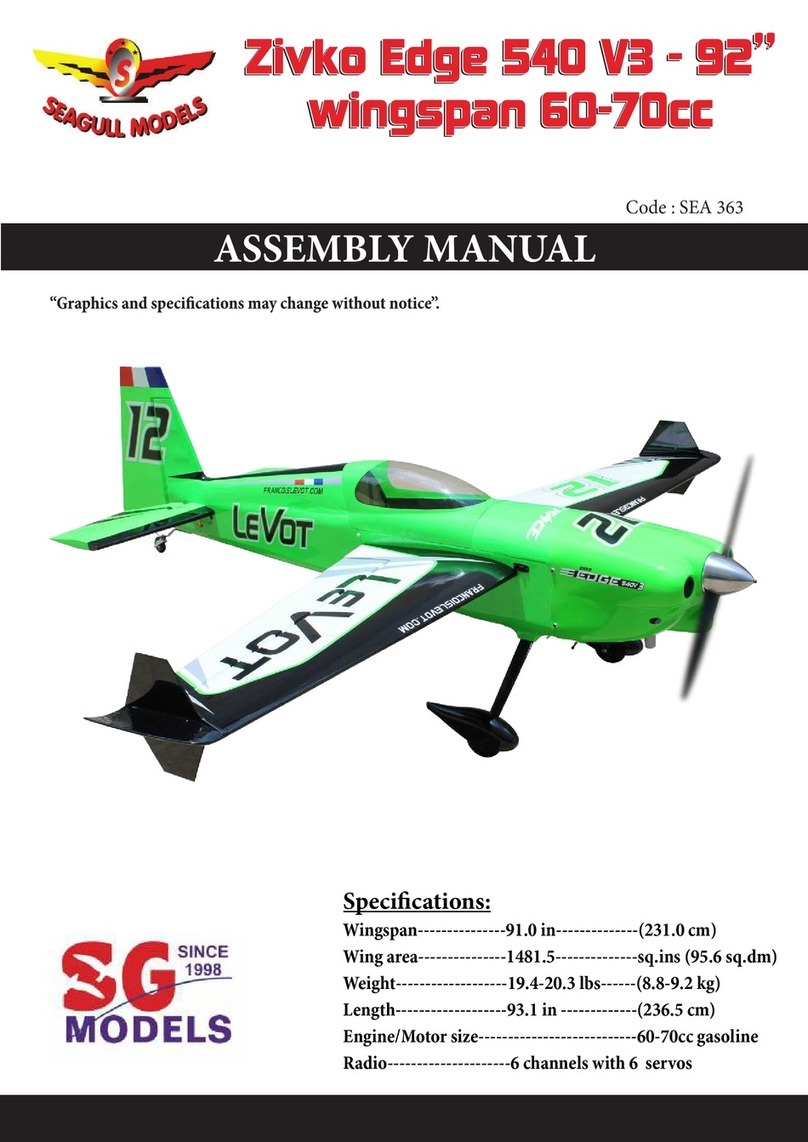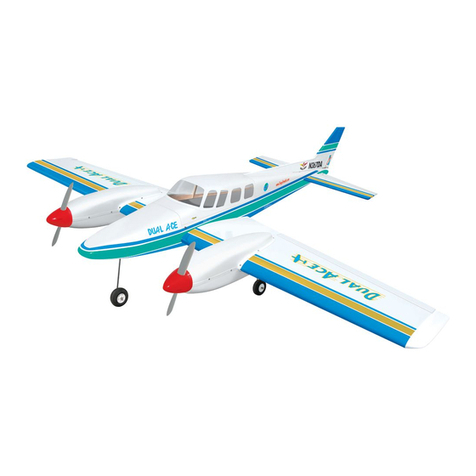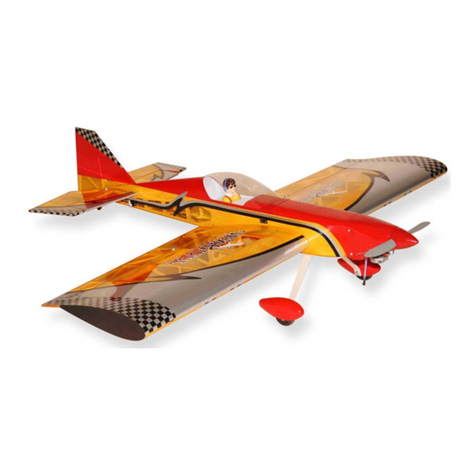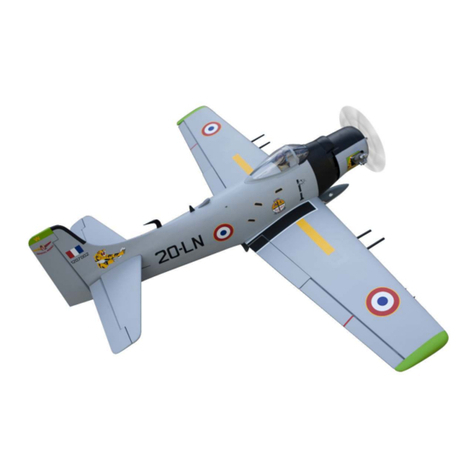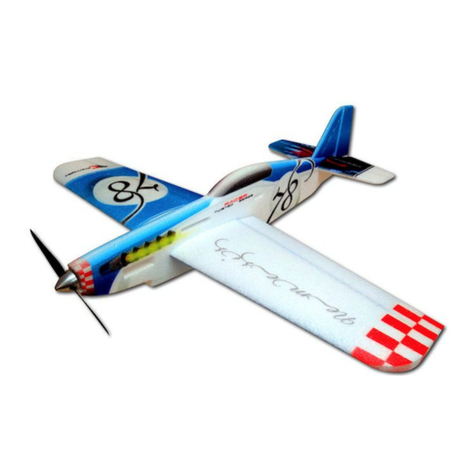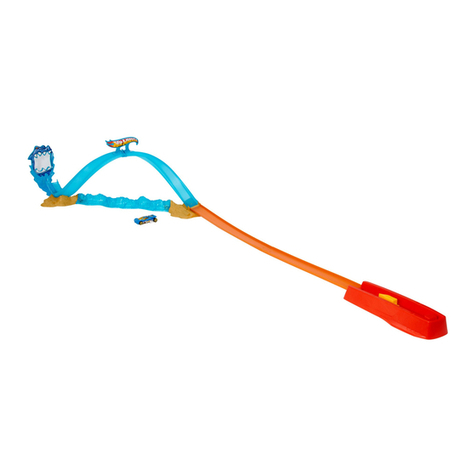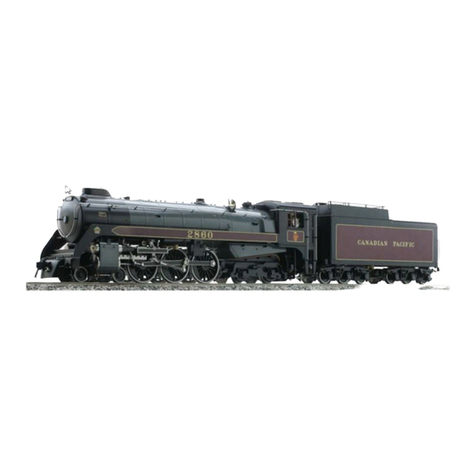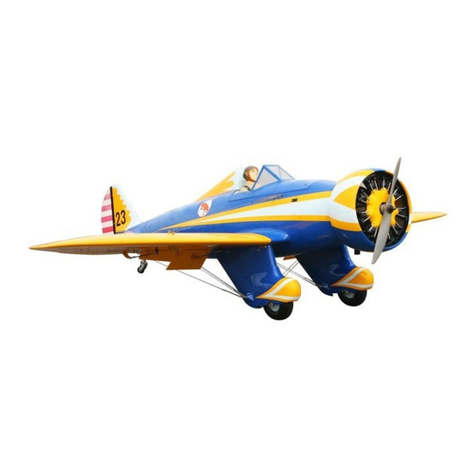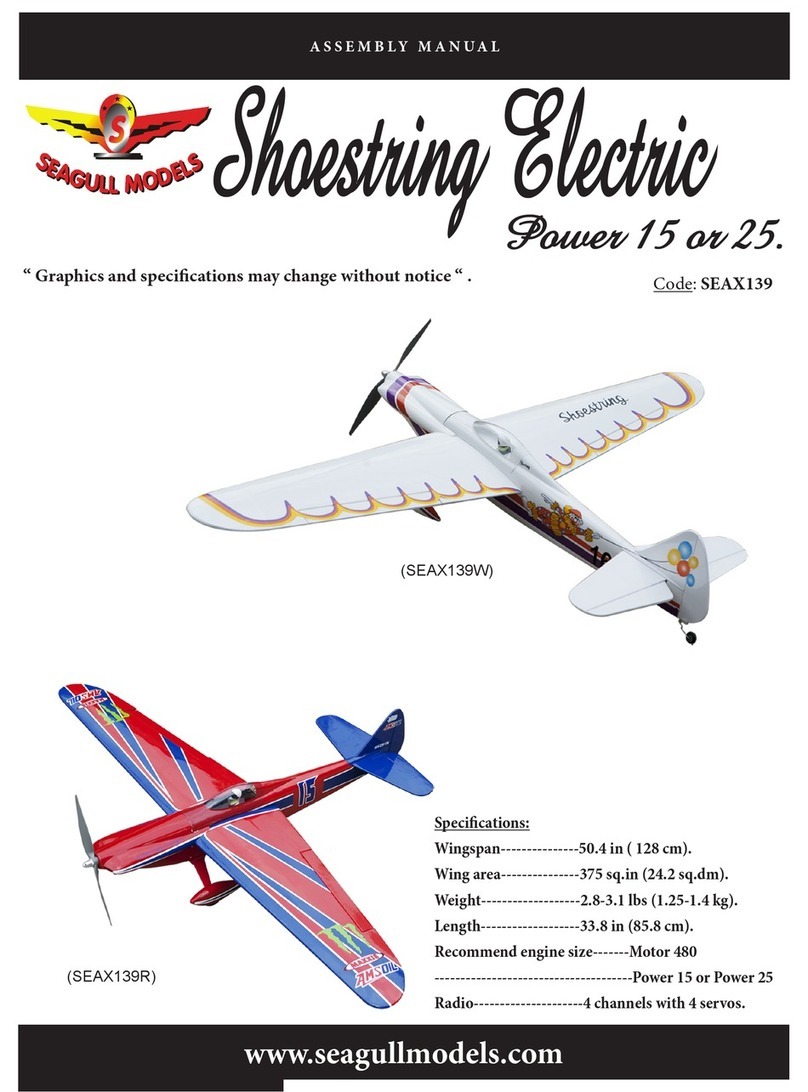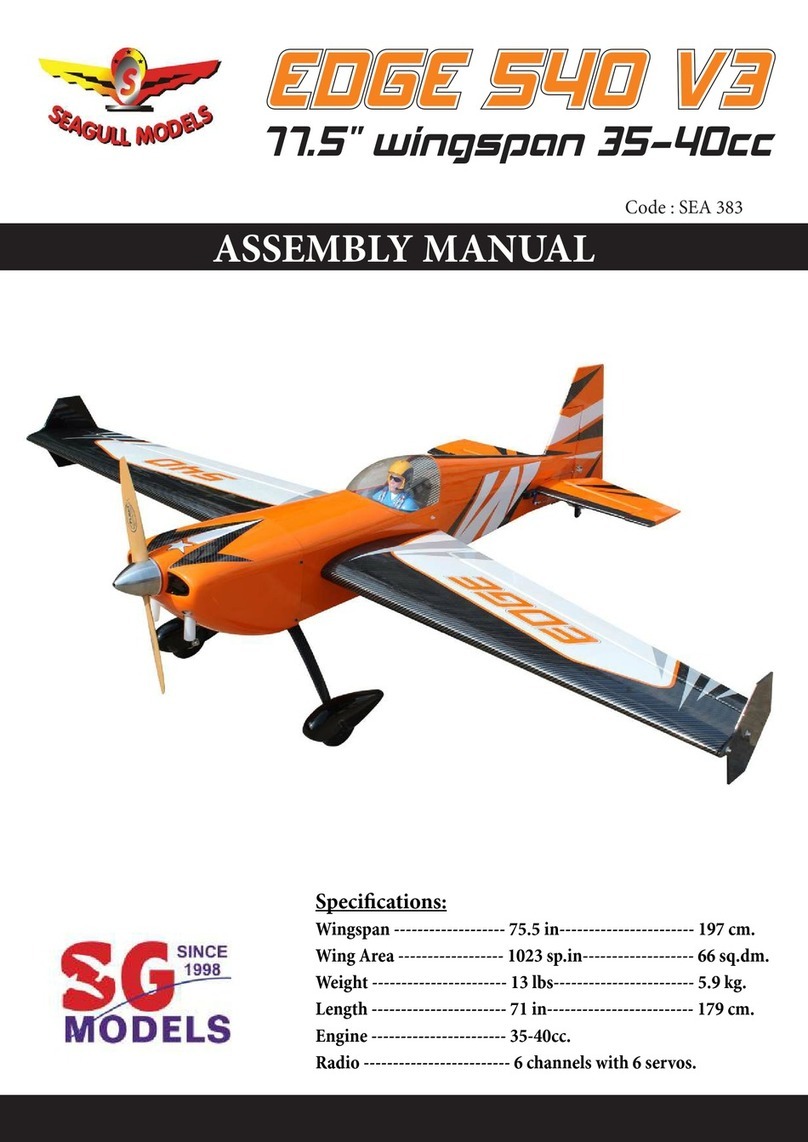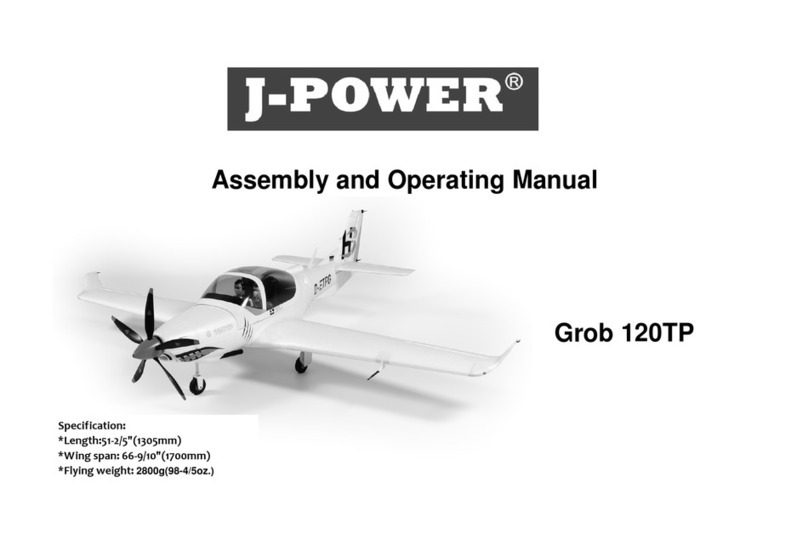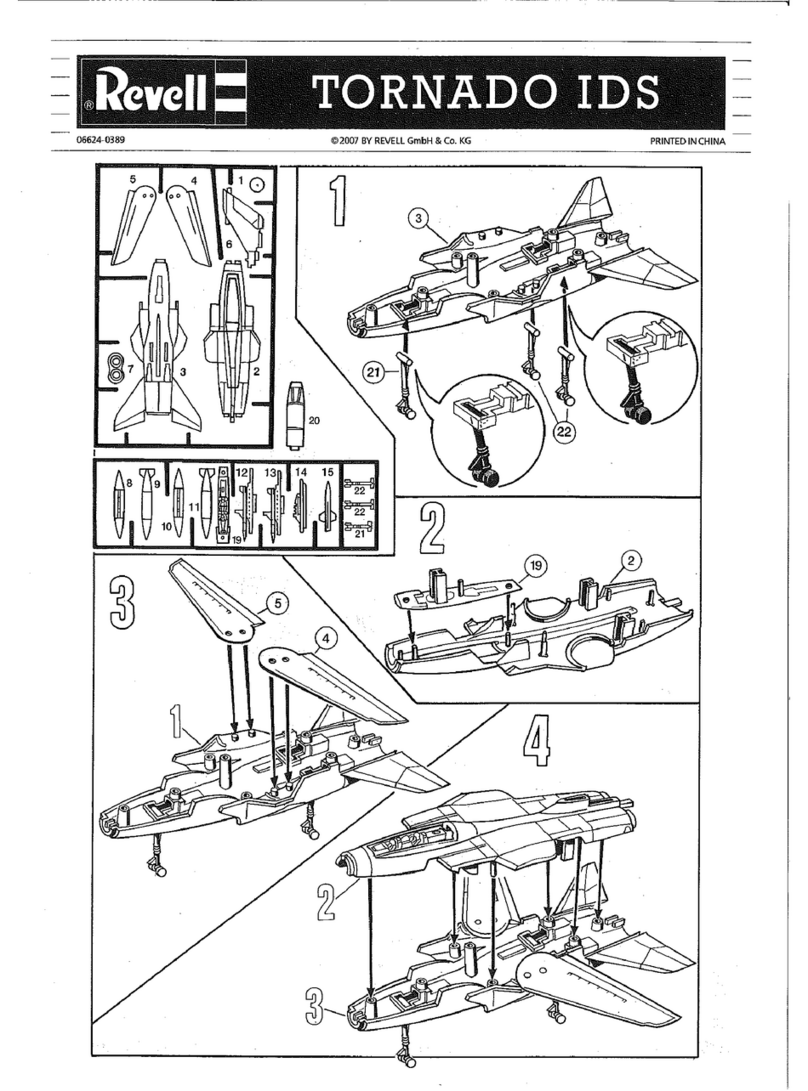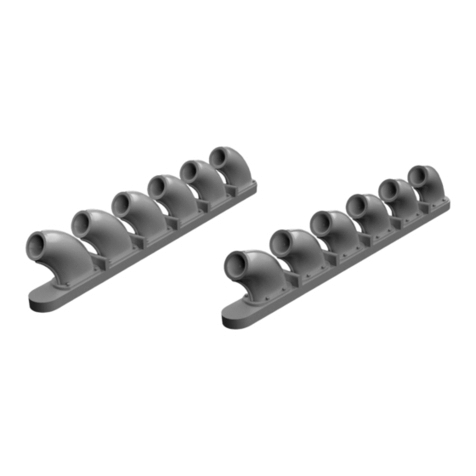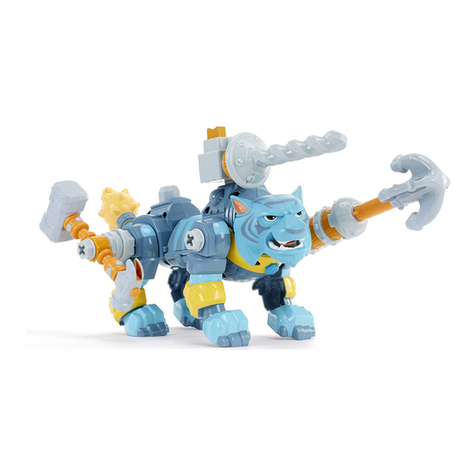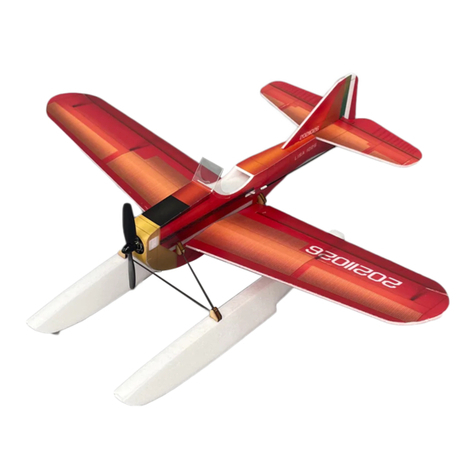www.seagullmodels.com
15
2) If the nose of the plane falls, the plane
is nose heavy. To correct this first move the
battery pack further back in the fuselage. If
this is not possible or does not correct it, stick
small amounts of lead weight on the fuselage
sides under the horizontal stabilizer. If the tail
of the plane falls, the plane is tail heavy. To
correctthis,move the battery andreceiver for-
ward orif this is not possible, stick weight onto
the firewall. When balanced correctly, the air-
plane should sit level or slightly nose down
when you lift it up with your fingers.
1) We highly recommend setting up the
ET6 usingthecontrolthrowslistedatright. We
have listed control throws for both Low Rate
(initial test flying/sport flying) and High Rate
(aerobaticflying).
CONTROL THROWS.
INITIAL FLYING/SPORT FLYING
Ailerons high rate -3/8” up -3/8” down
Ailerons low rate -3/16” up -3/16” down
Elevatorhighrate -5/16” up -5/16” down
Elevatorlowrate -5/8”up-5/8”down
Do not use the aerobatic settings for
initial test flying or sport flying.
3) When the elevator, rudder and aileron
control surfaces are centered, use a ruler and
check the amount of the control throw in each
surface. The control throws should be
measured at the widest point of each sur-
face!
2) Turn on the radio system,and with the
trim tabs on the transmitter in neutral, center
the control surfaces by making adjustments
totheclevisesoradjustable servo connectors.
The servo arms should be centered also.
4) By moving the position of the adjust-
able control horn out from the control surface,
you will decrease the amount of throw of that
control surface. Moving the adjustable con-
trol horn toward the control surface will in-
crease the amount of throw.
FLIGHT PREPARATION.
A) Check the operation and direction of
the elevator, rudder, ailerons and throttle.
B) Plug in your radio system per the
manufacturer's instructions and turn every-
thingon.
E)Check the throttle.
D) Check the rudder. Looking from be-
hindthe airplane,move the rudder stick to the
right. Theruddershould move to theright. Ifit
does not, flip the servo reversing switch on
your transmitter to change the direction.
C) Check the elevator first. Pull back on
theelevator stick. The elevatorhalves should
move up. If it they do not, flip the servo re-
versing switch on your transmitter to change
the direction.
F) From behind the airplane, look at the
aileronontherightwing half. Move the aileron
sticktotheright. The right aileron shouldmove
upandthe other aileronshouldmove down. If
it does not, flip the servo reversing switch on
your transmitter to change the direction.
PREFLIGHT CHECK.
1) Completely charge your transmitter
and receiver batteries before your first day of
flying.
2) Check every bolt and every glue joint
intheET6 toensurethateverythingistightand
wellbonded.
Rudderhighrate-3/4”leftandright
Rudderlowrate-1-1/4‘’ left and right
3) Check the controlsurfaces. All should
move in the correct direction and not bind in
any way.
4) If your radio transmitter is equipped
withdual rate switches double check that they
are on the low rate setting for your first few
flights.
5) Check to ensure the control surfaces
are moving the proper amount for both low
and high rate settings.
6) Check the receiver antenna. It should
be fully extended and not coiled up inside the
fuselage.
7) Properlybalancethe propeller. Anout
of balance propeller will cause excessive vi-
bration which could lead to engine and/or air-
frame failure.
We wish you many safe and enjoyable
flights with your ET6.















